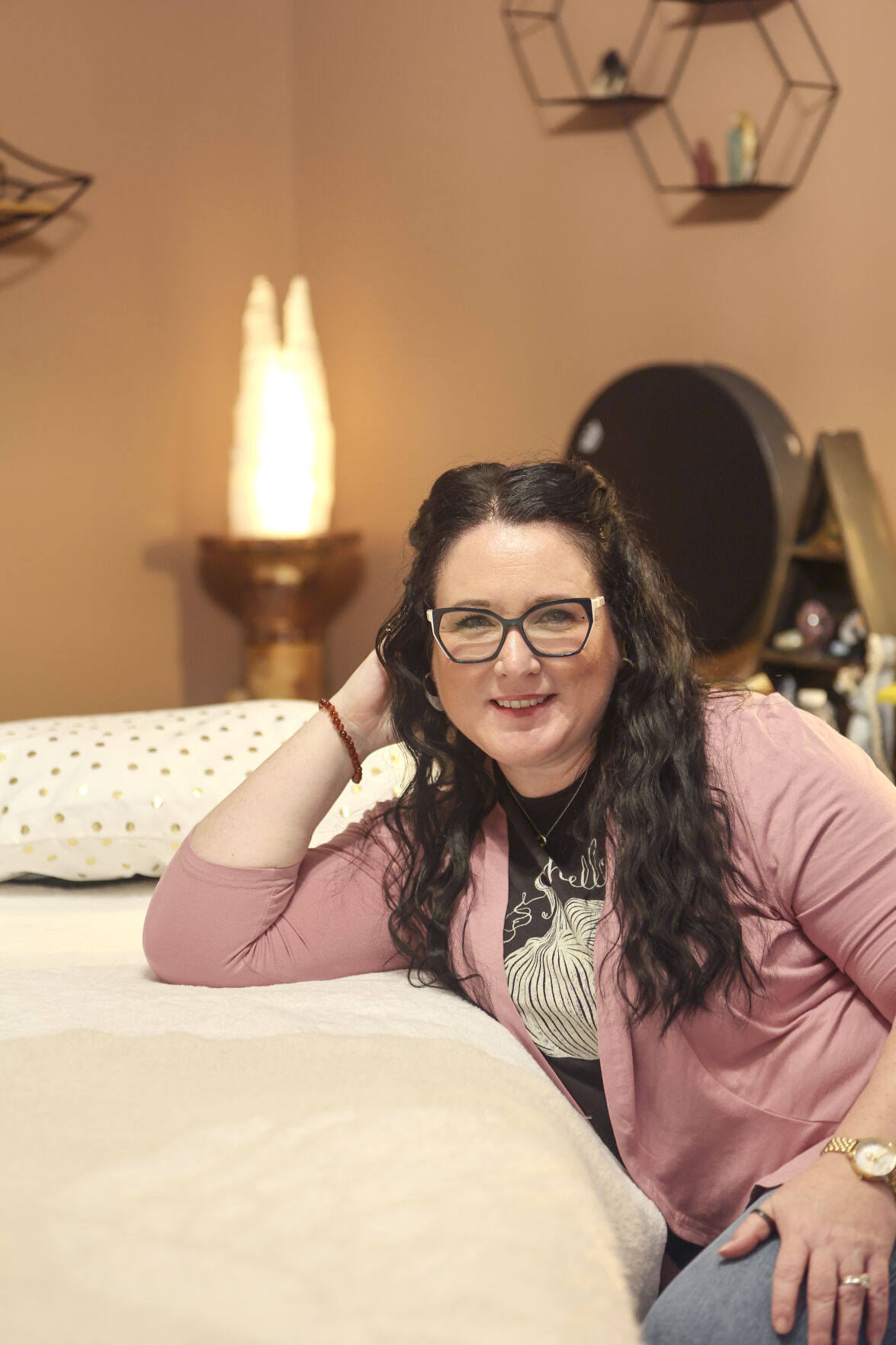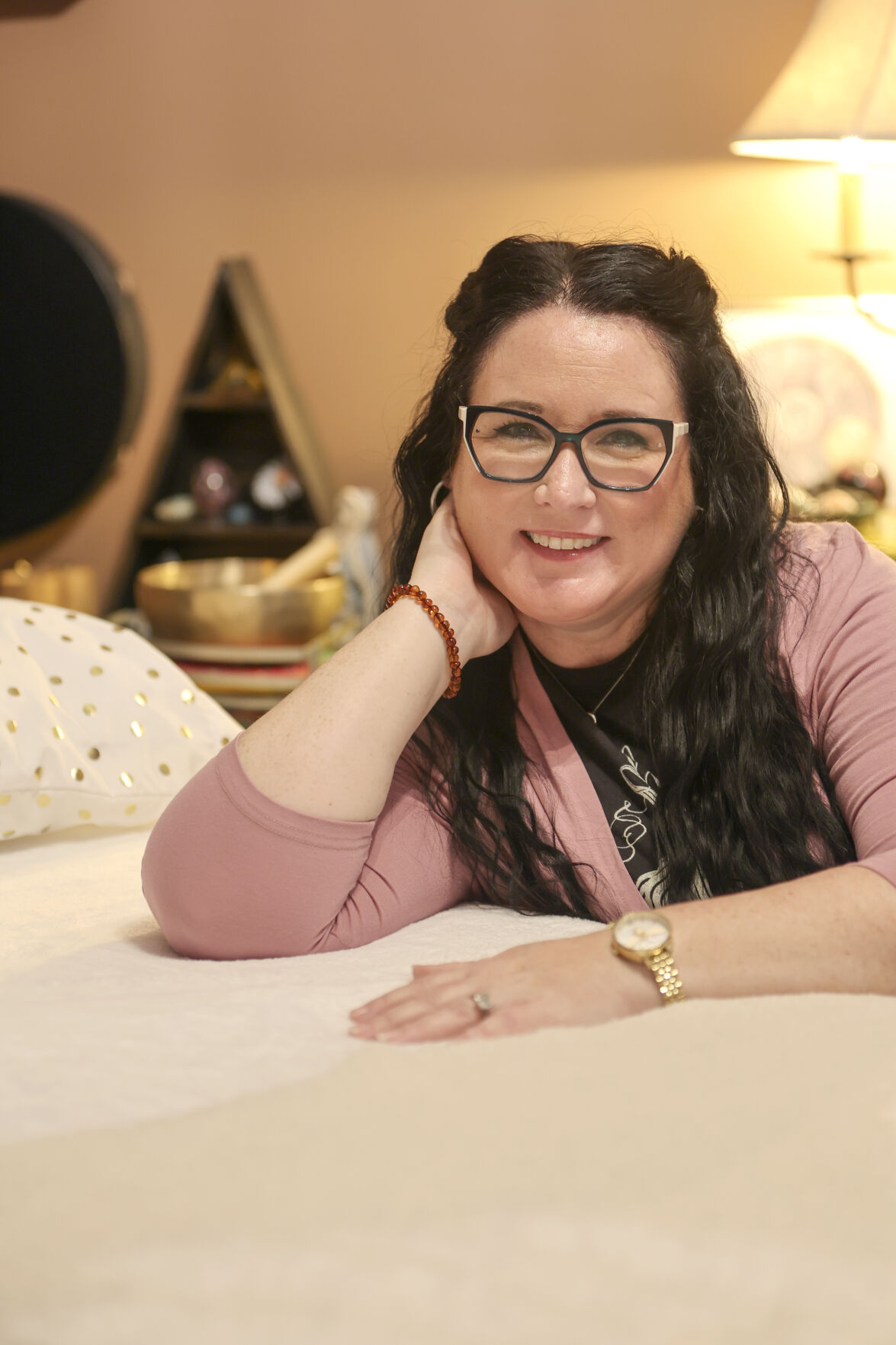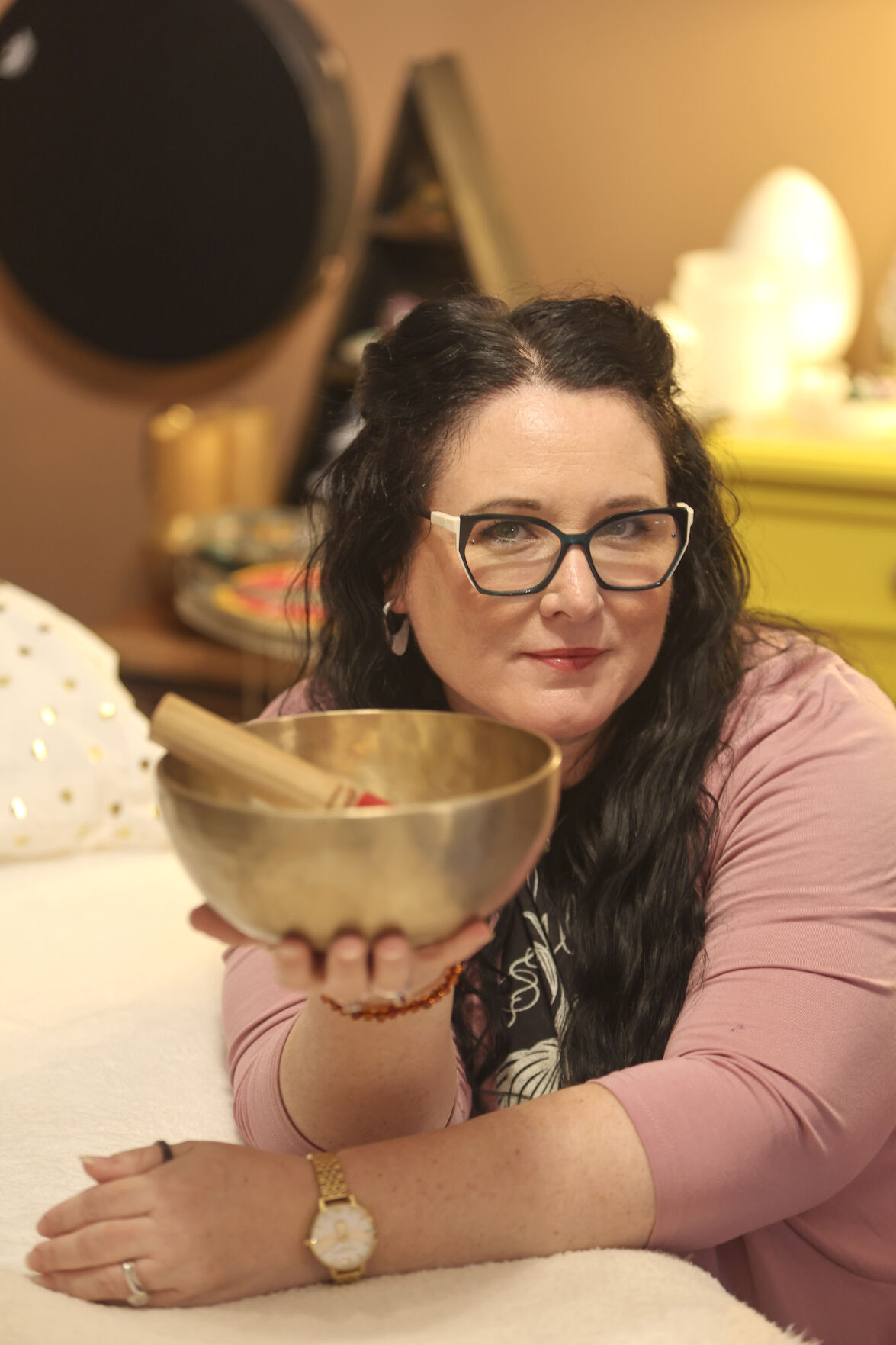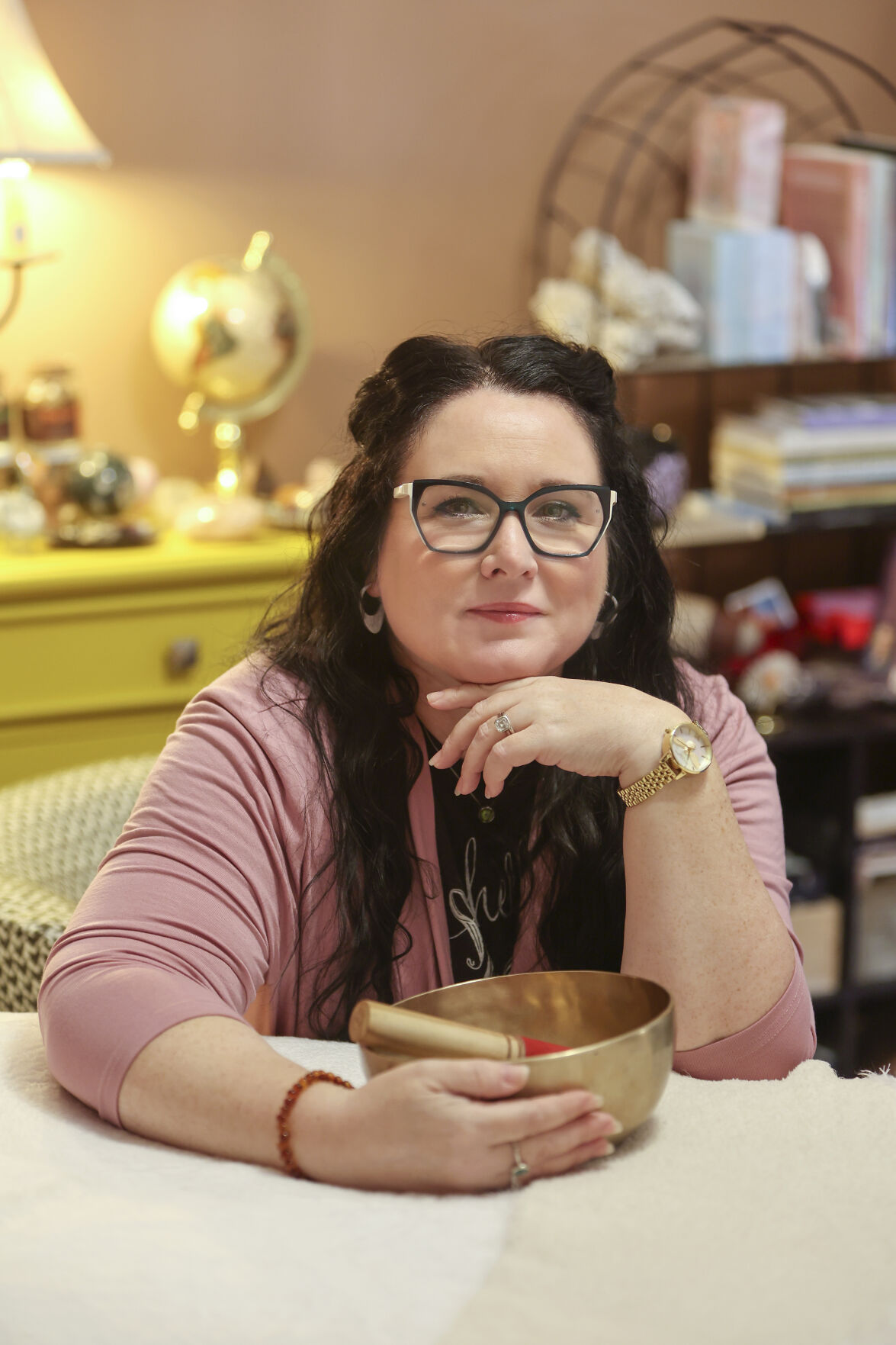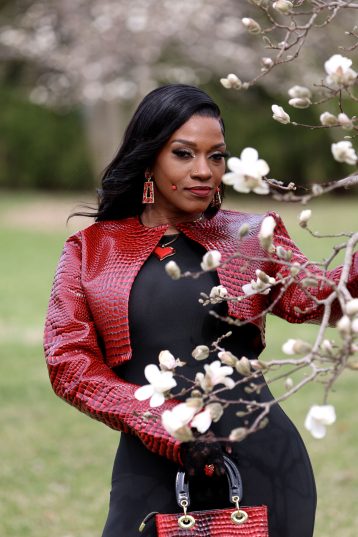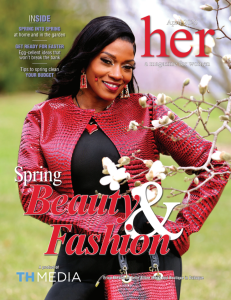On Jan. 1, 2017, Jessica Abresch found her life coming to a crossroads.
Her mother had just passed away. The following year, her father was diagnosed with cancer, eventually succumbing to his illness.
“People don’t understand how horrible the death of a parent can be,” said Abresch, a Dubuque native. “The stress and the grief, it can really be a lot to try and manage.”
Amidst her loss, Abresch’s marriage also was coming to an end.
It wasn’t until a chance visit from an extended family member that she stumbled upon an artistic outlet that would help to sooth her nerves and calm her mind.
“One day, she came over and was showing me these cool patterns she had drawn,” Abresch said. “She handed me some paper, and I started drawing these lines, over and over, repeating and altering the pattern until this cool, 3D image was made. She asked me what I was thinking about as I was drawing. I hadn’t thought of anything. It was as though my mind just got completely lost in what I was doing. I became obsessed with it. It became my meditation.”
It’s known as the Zentangle Method. Combining the words “zen” and “tangle,” zen describes the state of mind in which emotions and thoughts are released, while a tangle is the design, comprised of a mixture of lines, dots, basic curves and orbs.
The practice has been said to inspire creativity and self-confidence, while simultaneously stimulating focus, and increasing problem-solving skills and
well-being through allowing creators to
“get lost” in their works of art.
“A lot of people think you need to be an artist,” Abresch said. “But anyone can create a Zentangle. You can use any kind of pen and any kind of paper, even a cardboard box from out of the recycling bin. The goal is not perfection. The goal is to let go and create without judgement through a series of shapes. It’s like a massage for your mind. It just gives your brain a break. Bills, bad day, fight with your spouse, kids driving you crazy? You can just let everything go.”
While limited scientific studies have been done to explain the process behind it, some who have practiced Zentangle are said to have experienced relief from phobias, addiction and burnout, as well as pain management and conflict resolution.
Inspired by the calm she was able to manifest through her designs, Abresch — a full-time registered traveling nurse — became certified as a Zentangle teacher, in addition to completing certifications in sound therapy, reiki and animal reiki through the International Center for Reiki Training.
After completing her studies, she established Outside the LinZ, offering live and recorded virtual classes based out of her Asbury, Iowa, home, as well as specialty Zentangle designs.
Since launching the series of virtual classes, Abresch has amassed a steady following from across the globe, with even celebrities such as Rosie O’Donnell chiming in.
“That was really cool and a huge surprise,” Abresch said. “She loves Zentangle.”
The Outside the LinZ TikTok has netted approximately 187,000 followers and more than 900,000 “likes,” with more than 1,000 followers on Facebook and nearly 3,000 subscribing to its YouTube channel.
Abresch said it speaks not only to the growing popularity of Zentangle, but also to a greater interest and openness to the variety of self-care practices available.
“I think, especially since the COVID-19 pandemic — when people were spending a lot more time in isolation — there has been a greater emphasis placed on health and wellness,” Abresch said. “A lot of that is looking at what that is rooted in — why we are feeling what we are feeling and what our pain comes from.
“Whenever I am teaching a Zentangle class, we spend a lot of time focusing on setting an intention for that time we’re creating. Once we relax into the process, we breathe in gratitude, and exhale judgement and anything else that is negative. We notice everything from our shoulders or our toes being tight to how tightly we are gripping the pen or pressing down on the paper. All of it is the result of something. And through our practice, the hope is that we are able to let it go and just be present with our design.”
For Abresch, the results have been
life-changing.
Not only has she been able to find the calm in her life and help others find it in theirs in embracing their creative side, but she also has founded a collection of copyrighted gnome-like Zentangle characters she calls, “Gnangles.”
“I’ve written a series of books I’m in the process of trying to get published,” Abresch said. “Each of us have a story, and that’s reflected in the qualities of each of these characters.”
Through the calm emerged self-love, which Abresch credits as the foundation of her healing — as well as her newfound love.
In 2020, she remarried her high school sweetheart — 25 years after they had last been in touch.
Between the two of them, they have five children, ages 19 through 28.
“I like to think of it as diving timing,” Abresch said, with a laugh. “All of this came about at the same time, so I don’t believe anything is a coincidence or that anything is a mistake.”
It also has brought her into a deeper connection with other like-minded individuals who she credited with helping her come into a better sense of self, as well as with her spirituality.
“I grew up and was raised Catholic,” Abresch said. “I probably do more talking to God now than I have ever done before.”
While Zentangle has resonated as her primary form of self-care, Abresch said that looking ahead to 2024, that practice can mean anything to anyone. The important thing is to simply find what works and begin.
“Self-care can be anything you want it to be,” she said. “It can be something you do in a group setting or something you do on your own. It doesn’t have to be profound. So much of it is simple and just comes down to getting out of your own way and the basic principles of being kind, being open, being vulnerable and just trying to be your best self. We’re never done learning, growing or finding ways we can improve ourselves.”
Megan Gloss writes for the Telegraph Herald.

